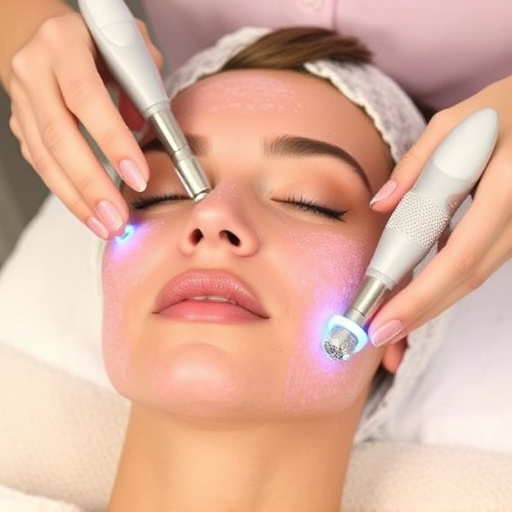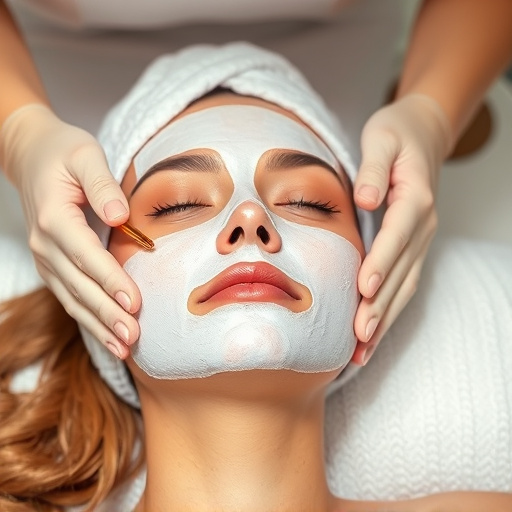Laser hair removal treatment is a 30-minute procedure, with 6-8 sessions typically needed for optimal results on lighter skin and darker hairs, lasting up to several months. Treatment duration varies based on body area, skin type, metabolic rate, hormone levels, and combined aesthetic treatments. Consistent adherence to a treatment plan, supporting skincare routines, and avoiding tanning are crucial for successful outcomes.
“Uncover the secrets behind achieving smooth, hair-free skin with our comprehensive guide on laser hair removal sessions. Understanding how many treatments are required can seem daunting, but this article simplifies the process. We’ll explore the factors influencing your personalized laser hair removal journey, from skin type to area being treated. Learn tips to optimize results and make informed decisions about this popular and effective non-invasive procedure, known as laser hair removal treatment.”
- Understanding Laser Hair Removal Sessions
- Factors Influencing Treatment Time
- Optimizing Results: Tips for Patients
Understanding Laser Hair Removal Sessions

Laser hair removal treatment is a highly effective method for reducing unwanted hair, offering long-lasting results compared to traditional methods. The process involves targeted energy absorption in the hair follicle, which damages or destroys it, thereby inhibiting future hair growth. Each session focuses on specific areas, and multiple sessions are typically required to achieve optimal results, as not all hairs will be in their active growing phase at once.
Understanding the nature of laser hair removal sessions is crucial for setting realistic expectations. These non-surgical treatments work best on darker hairs with lighter skin tones, as the laser targets melanin. Each session lasts relatively short, usually around 30 minutes, but multiple appointments are essential. Typically, 6 to 8 sessions spaced several weeks apart are recommended for noticeable and lasting hair reduction, though individual results may vary. Some even suggest touch-up sessions periodically to maintain optimal outcomes, especially in areas with higher hair growth rates.
Factors Influencing Treatment Time

The duration of a laser hair removal treatment depends on several factors that influence the overall time required to achieve desired results. One significant factor is the area being treated, as larger body parts will necessitate more sessions. For instance, areas like the back or legs may need 4-6 sessions, while smaller zones like underarms or facial hair might only require 2-3 visits. The type of skin and hair also play crucial roles; darker skin with coarser hair typically responds better to laser treatment, requiring fewer sessions.
Additionally, individuals’ unique metabolic rates and hormone levels can impact treatment outcomes and time frames. Some people may see results faster, while others might need extra sessions. It’s important to note that combining laser hair removal with other aesthetic treatments like chemical peels or non-surgical procedures can also affect the overall treatment time. Each additional procedure adds a layer of complexity, potentially lengthening the journey towards achieving smooth, hair-free skin.
Optimizing Results: Tips for Patients

Achieving optimal results from your laser hair removal treatment requires a collaborative effort between you, the patient, and your healthcare provider. Consistency is key; adhering to your treatment plan, including regular sessions, is essential for long-lasting outcomes. Each individual’s skin and hair growth patterns are unique, so the number of sessions needed may vary. On average, patients can expect 4-6 treatments spread over several months.
During this time, it’s beneficial to incorporate supporting skincare routines at home. Skin rejuvenation techniques like regular exfoliation and moisturizing can enhance absorption of laser energy, while skin tightening exercises and a healthy diet promote overall skin health. Additionally, protecting your skin from excessive sun exposure is vital; avoid tanning beds and use high SPF sunscreen to prevent unwanted pigmentation changes that might interfere with treatment effectiveness.
Laser hair removal treatment is a highly effective method for long-term hair reduction, but the number of sessions required varies based on individual factors. Understanding these variables and optimizing your approach can lead to desirable results. By considering the unique characteristics of your skin and hair, along with professional guidance, you can tailor your laser hair removal plan. Remember, patience and consistency are key as multiple sessions are often necessary for optimal outcomes. Embrace the process, and you’ll be well on your way to achieving smoother, hair-free skin.














